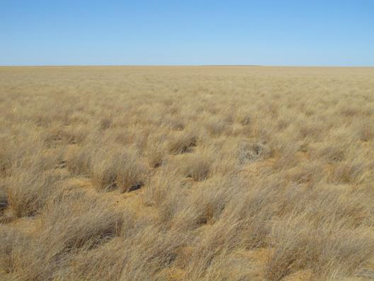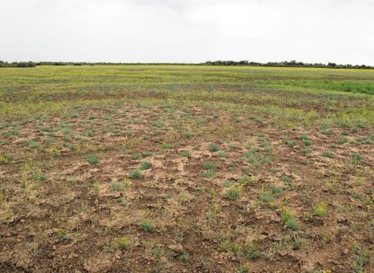Mixed open forblands to open tussock grasslands in inland locations


Habitat type: Mixed open forblands to open tussock grasslands in inland locations
Other key words: Short grasses on alluvial plains, open herbland, forbs.
Description: This vegetation type occurs on flat alluvial plains and braided channel systems or stony plains that appear virtually devoid of vegetation. The dominant plants can vary depending on seasonal conditions and local variations in habitat. During summer rainfall or flooding, grasses tend to dominate, while forbs dominate after winter events. Some of the many grass species found include katoora grass (Sporobolus actinocladus), fairy grass (S. caroli), rat's tail couch (S. mitchellii), feathertop wiregrass (Aristida latifolia), barley mitchell grass (Astrebla pectinata), hoop mitchell grass (A. elymoides), bull mitchell grass (A. squarrosa), five minute grass (Tripogon loliiformis), bunched kerosene grass (Aristida contorta) winged chloris (Oxychloris scariosa), bottlewashers (Enneapogon avenaceus), and rat tail grass (S. australasicus).
Some animals that use this habitat type: Plains wanderer, narrow-nose planigale, fierce snake/western taipan.


